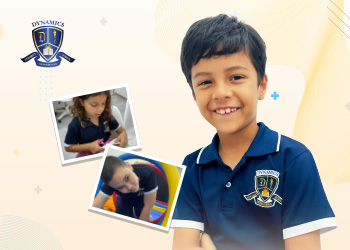|
Proprioception is the sensory feedback that comes from the muscles, joints, tendons and ligaments in the body. It gives individuals an awareness of where their limbs and body are in space.
How do I know if my child has difficulty with "proprioception"?
Here are 5 signs that a child might have difficulty with proprioception:
 Clumsiness Clumsiness
Children with proprioceptive difficulties may appear clumsy or uncoordinated. They may frequently bump into objects, trip over their own feet, or have trouble maintaining their balance.- Difficulty Modulating Force
Children might exert too much force when writing or drawing, leading to broken pencils or ripped paper, or they might have trouble controlling their strength when playing with peers or playing sports.
 Seeking Sensory Input Seeking Sensory Input
Children with proprioceptive difficulties may seek out intense sensory experiences such as crashing into furniture, seeking out tight hugs, or engaging in rough play.- Poor Body Awareness
Children might struggle with tasks that require them to coordinate their movements, such as dressing themselves, writing or navigating through crowded spaces.
 Limited Fine Motor Skills Limited Fine Motor Skills
Proprioceptive difficulties can impact fine motor skills, making tasks like writing, cutting with scissors, or buttoning clothing a challenge.
|
| Events & Promotions |
| Celebrate Autism Awareness Month! |
20th April 2024 | Time: 10:00 am - 1:00 pm
Calling all parents and children!
Join us for an enriching day filled with LEGO Fun, Kinetic Science Station, Sensory Bottle Crafts and Interactive Math Activities. |
|
|
 |
|
 |
| Receive a complimentary 20 Minute video call or phone consultation! |
| Confused if your child needs therapy? Speak to our highly qualified therapists to find a solution... |
|
|
|
| Refer a Friend and Reap the Rewards! |
| Thank you for your loyalty! If you're satisfied with our services, please spread the word to your friends... |
|
|
|
 |
|
| Tips |
| How can I help my child further develop their proprioceptive awareness at home? |
|
Here are 5 ways parents can incorporate proprioceptive input for their child at home:
-
 Heavy Work Activities
Heavy Work Activities
Encourage your child to engage in activities that involve pushing, pulling, lifting, or carrying heavy objects. This could include tasks like moving furniture, pushing a loaded laundry basket, or carrying grocery bags.
-
Jumping and Bouncing
Jumping and bouncing activities (e.g. on a mini trampoline or cushions) can provide deep pressure input to the joints, which can help regulate the sensory system.
-
 Obstacle Courses
Obstacle Courses
Create an obstacle course that involves crawling under, climbing over, and balancing on various objects.
-
Sensory play
Fill a shallow and wide container with materials like rice, beans, sand, or water and hide small toys or objects within it. Encourage your child to dig, scoop, and search for the hidden items, which engages their sense of touch and proprioception.
-
 Body Pressure Activities
Body Pressure Activities
Incorporate activities that involve applying deep pressure to your child's body, such as giving firm hugs, using **weighted blankets or vests, or rolling a therapy ball over their back. This gentle pressure can provide calming input.
By integrating these activities into your child's daily routine, you can support their sensory regulation and promote a sense of calmness and well-being. If you suspect that your child is experiencing challenges with proprioception, early intervention and support from a therapist, such as an OT, can help address these difficulties and improve the child's overall functioning.
** Weighted blankets or vests should not be more than 10% of the child's body weight. Recommended use is for 15-20 minutes at a time to maintain effectiveness. Always follow product safety guidelines.
|
|
| Employee Spotlight |
 |
Samantha Ramjahn
Motor Skill Specialist |
Meet Samantha, our Motor Skills Specialist at Dynamics Therapy Group. Get to know her better as she answers ten fun questions in this month's Employee Spotlight!
Click here, to get up close and personal with Samantha! |
|
|
| Success Story |
 |
Breaking Boundaries: Liam's Journey from Restlessness to Regulation.
|
|
Liam is a 6 year old boy who attends our Dynamics International School and attends regular therapy sessions. He has difficulty sitting still in class...
Click here
|
|
|
|


 Clumsiness
Clumsiness Seeking Sensory Input
Seeking Sensory Input Limited Fine Motor Skills
Limited Fine Motor Skills


 Heavy Work Activities
Heavy Work Activities Obstacle Courses
Obstacle Courses Body Pressure Activities
Body Pressure Activities






